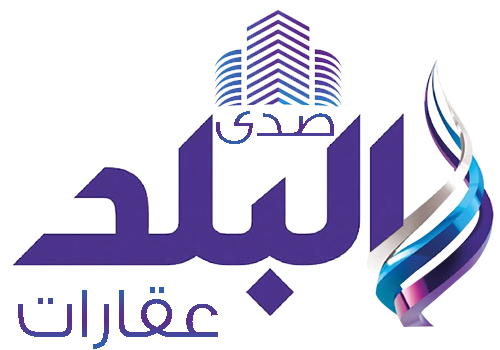The Hayat Tahrir al-Sham (HTS) government has filled the vacuum left by the fall of the Assad regime in Syria, which had been in power for 54 years. If HTS could be described by a single color, that would be gray, and it is driven by Islamic extremists. That said, it claims that it has turned over a new leaf and is actively seeking support and endorsement from the international community.
It remains unclear what principles and ideals the new government will embrace in rebuilding Syria. If HTS aims to reconstruct Syria as a normal state, open up relations with the Western world, and become a responsible member of the international community, it must make a fresh start with the world of liberal democracy. The previous Syrian government had maintained a cozy relationship with the Soviet Union and North Korea, and the new government’s efforts to establish new diplomatic ties with liberal democratic Asian countries, including South Korea, would greatly facilitate any effort to expand exchange and cooperation with the Western world. The past regime strove to maintain its dictatorship by leveraging its close relationship with North Korea. However, the relationship did more harm than good to Syria’s image in the international community. The new Syrian government is now at a critical juncture where it must immediately make a cool-headed decision for a better future for Syria and its people.

Military cooperation between Syria and North Korea over decades has helped the Pyongyang regime become a state comparable to Russia and Iran, Damascus’ longstanding allies. Since the 1960s, North Korea has retained a small-scale military presence in Syria, and its troops gained combat experience during the Yom Kippur (meaning “day of atonement” in Hebrew) War in 1973. North Korean engineers rendered support to the Syrian forces in their modernization and aided Syria’s development of nuclear weapons until the Israeli Airforce destroyed the nuclear facilities near Deir ez-Zor in 2007.
North Korea supported Syria in a number of ways through the years, for example, by dispatching 25 pilots to Syria during the Arab-Israeli War in 1967 and 30 pilots to both Syria and Egypt during the Yom Kippur War in 1973, and 40 pilots and 75 air force instructors to Syria in 1975 and 1976. It was reported that they trained Syrian pilots and engaged in combat missions against Israel.
In the 1970s and 80s, North Korea also helped upgrade military hardware, including the updating of turrets of hundreds of Soviet-made T-54 and T-55 tanks operated by the Syrian army and the installation of laser rangefinders designed by North Korea on armored vehicles. In the 1980s, North Korea sent special operations units to Syria to support insurgency tactical training for conventional Syrian government forces and their allies. According to analysis by the U.S.–Korea Institute, North Korea dispatched 50 drill instructors to Syria between 1984 and 1986 and 30 in 1990.
In addition to supporting the Syrian government militarily, North Korea has maintained a close relationship with Iran and Hezbollah, allies of the Assad regime. North Korean forces have effectively cooperated with Iranian forces since the Iran-Iraq War of 1980 to 1988, when they aided Teheran’s defense against Iraq. It has also supplied rockets and missiles to Hezbollah since the 1980s and provided significant military support to the Lebanese Shia organization prior to the 2006 Israel-Lebanon war. This alliance has helped North Korea solidify its unique standing as a partner capable of supporting the military activities of the Syrian government. Syria has also ensured that North Korean forces could be efficiently integrated into the pro-Assad coalition.
There are claims that North Korea played a pivotal role in helping Assad seize power by supplying precursors of chemical weapons. Such claims are backed by the close connection between the Korea Mining Development Trading Corporation (KOMID), North Korea’s agency for arms exports, and the Scientific Studies and Research Center (SSRC), a Syrian producer of chemical weapons. Two shipments of KOMID’s exports to Syria were intercepted in August 2017. Despite denials by President Assad and Russia, the Syrian government’s efforts to produce new chemical weapons raised suspicions over the links between Syria and North Korea. Pyeongyang’s provision of artillery rockets and ballistic missiles to Syria was also a central part of the KOMID and SSRC trade agreement. Though it was reported that North Korea was not able to ship nerve agents to Syria, there remains some likelihood of it indirectly supporting Syria’s chemical weapons program through other transportation means.
The true extent of North Korea’s involvement in the Syrian civil war, which began in 2011, remains unclear. Rhetorical support for the Assad regime, the presence of a military advisor group and the potential provision of chemical weapons precursors to Syria meant that North Korea had become a security threat to not only the region but also the international community. According to a report from Russian news agency TASS in 2016, Syria’s opposition delegation claimed during the Geneva peace talks that two North Korean militia units and Syrian government forces were fighting together. Asaad az-Zoubi, a key figure of the main opposition High Negotiations Committee (HNC) backed by Saudi Arabia, disclosed this information at the Syrian peace talks in Geneva supported by United Nations. He said, “Two North Korean units, Chalma-1 and Chalma-7, are in Syria.” The opposition leader, a former colonel of the Syrian Arab Armed Forces who led the Free Syrian Army at the southern front, expressed concerns by saying that North Korean troops were extremely dangerous.
Rumors about North Korean troops’ involvement, including the transfer of weapons and the presence of military advisors, have repeatedly surfaced since the start of the Syrian civil war. However, there has not been any conclusive evidence that the troops are fighting along with pro-Assad forces or materially supplying the Syrian government. This does not rule out North Korea’s involvement, and the two sides indeed shared a long history of military cooperation according to the U.S.–Korea Institute. North Korea has repeatedly supplied military equipment to Syria over the past few decades, including armored vehicles, anti-tank weapons, rifles, and heavy artillery.
It has also provided to Syria a large number of man-portable air defense systems (MANPADS), which are reportedly still in use as confirmed in photographs by ISIS fighters taken in 2014. North Korea also sold Scud-C Transporter-Erector-Launchers (TELs) and cluster warheads to Syria and is believed to have provided substantial technical support for Assad’s nuclear and chemical weapons programs for years.
The long relationship between Syria and North Korea has been undergirded mainly by illegal military cooperation, and the key part of it could be chemical weapons and nuclear cooperation. The ousted Syrian regime maintained the cooperative ties with North Korea to wage war intended to shore up its power. Therefore, if the current HTS government truly seeks to distance itself from conflicts and war and focuses on reconstruction, it should cut the ties with North Korea and expand exchange and cooperation with the free world. South Korea has a great deal to offer for the rebuilding of Syria. It would not be difficult for the HTS to establish relations with South Korea if it is interested in doing so.












